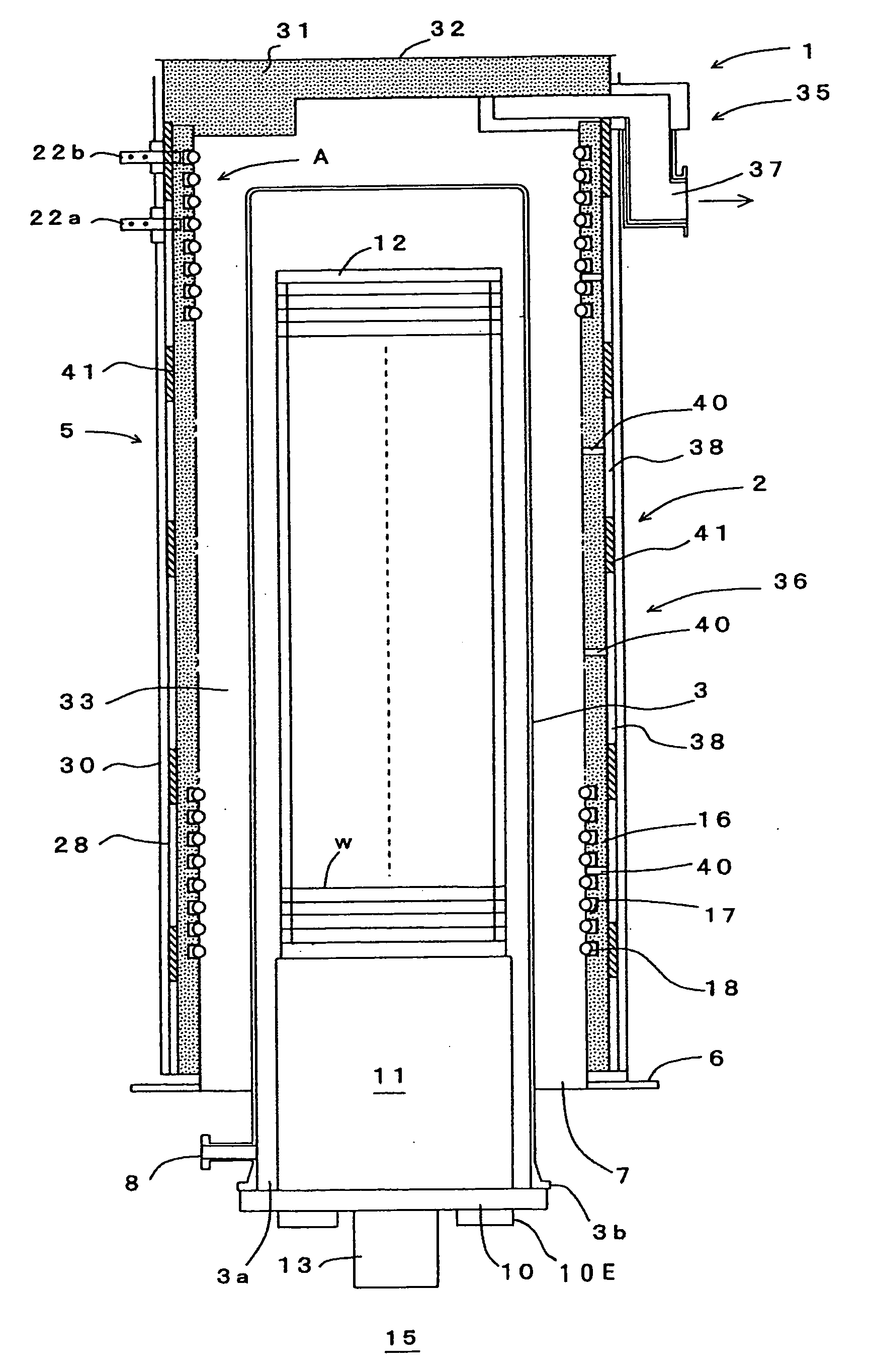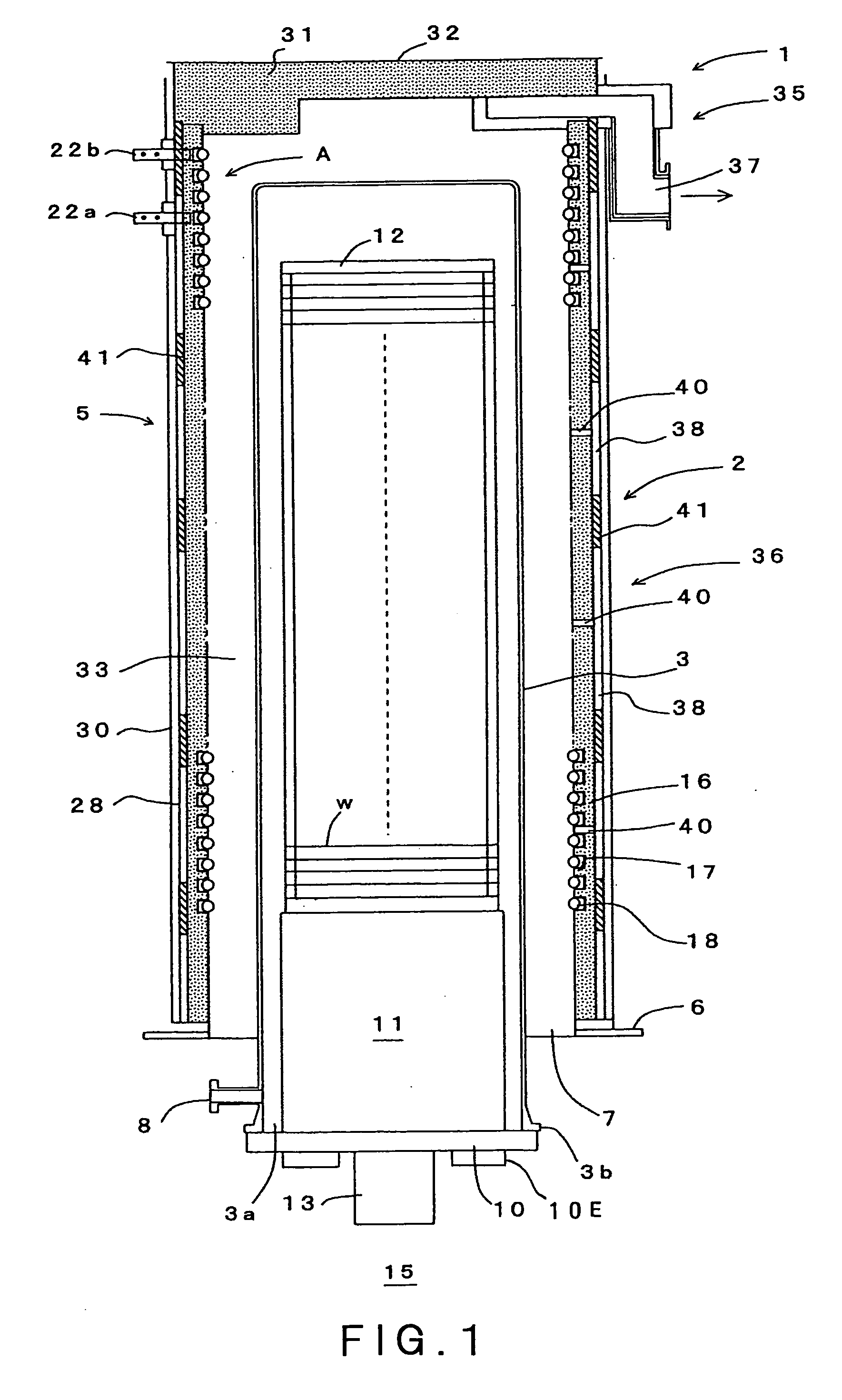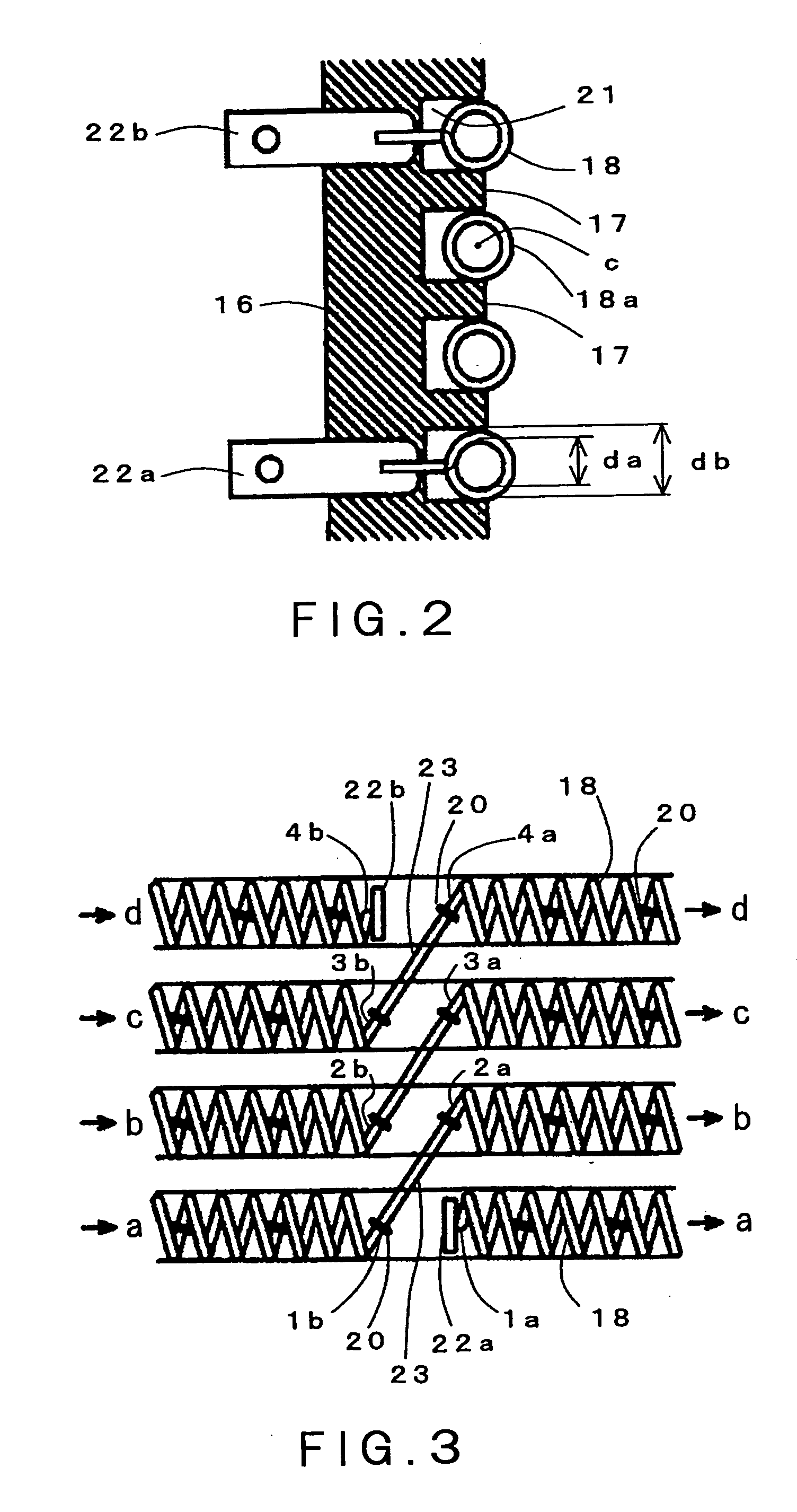Heat processing furnace and vertical-type heat processing apparatus
- Summary
- Abstract
- Description
- Claims
- Application Information
AI Technical Summary
Benefits of technology
Problems solved by technology
Method used
Image
Examples
Embodiment Construction
[0029]A best mode for carrying out the present invention will be described in detail below with reference to the attached drawings. FIG. 1 is a longitudinal sectional view schematically showing a vertical-type heat processing apparatus in one embodiment of the present invention. FIG. 2 is an enlarged sectional view showing a part A of FIG. 1. FIG. 3 is a view schematically showing an example of wire connection of heating elements. FIG. 4 is a view schematically showing another example of wire connection of the heating elements. FIG. 5 is a view schematically showing still another example of wire connection of the heating elements. FIG. 6 is a cross-sectional view showing a part of the vertical-type heat processing apparatus.
[0030]FIG. 1 shows a vertical-type heat processing apparatus 1 which is a kind of a semiconductor manufacturing apparatus. The heat processing apparatus 1 includes a vertical-type heat processing furnace 2 that can simultaneously accommodate a number of objects t...
PUM
 Login to View More
Login to View More Abstract
Description
Claims
Application Information
 Login to View More
Login to View More - R&D
- Intellectual Property
- Life Sciences
- Materials
- Tech Scout
- Unparalleled Data Quality
- Higher Quality Content
- 60% Fewer Hallucinations
Browse by: Latest US Patents, China's latest patents, Technical Efficacy Thesaurus, Application Domain, Technology Topic, Popular Technical Reports.
© 2025 PatSnap. All rights reserved.Legal|Privacy policy|Modern Slavery Act Transparency Statement|Sitemap|About US| Contact US: help@patsnap.com



